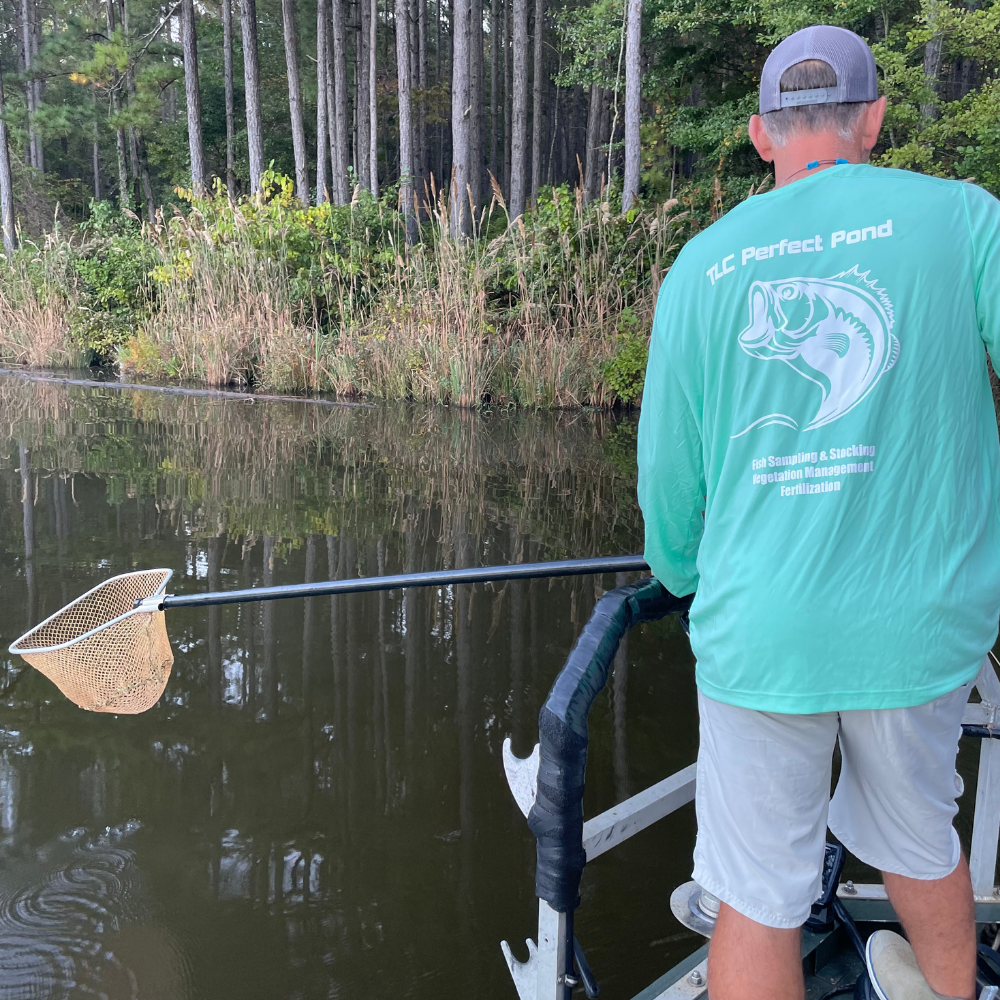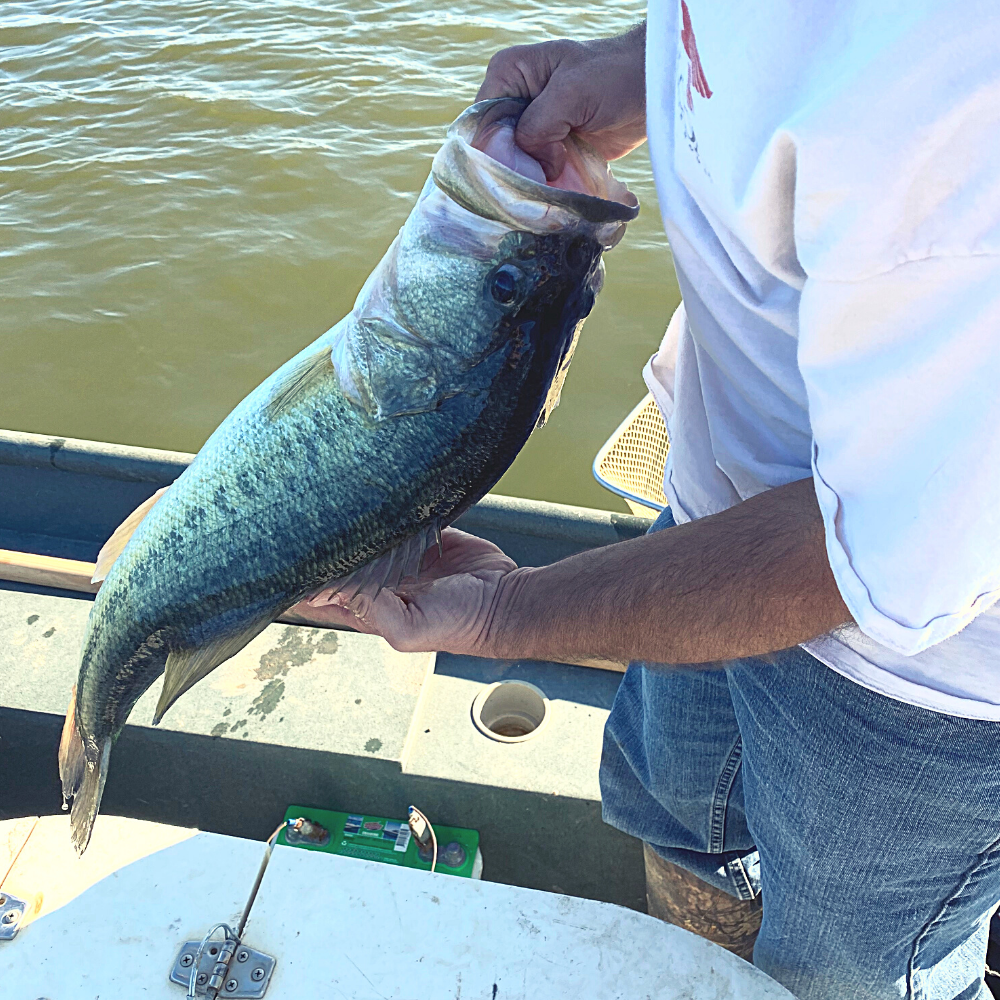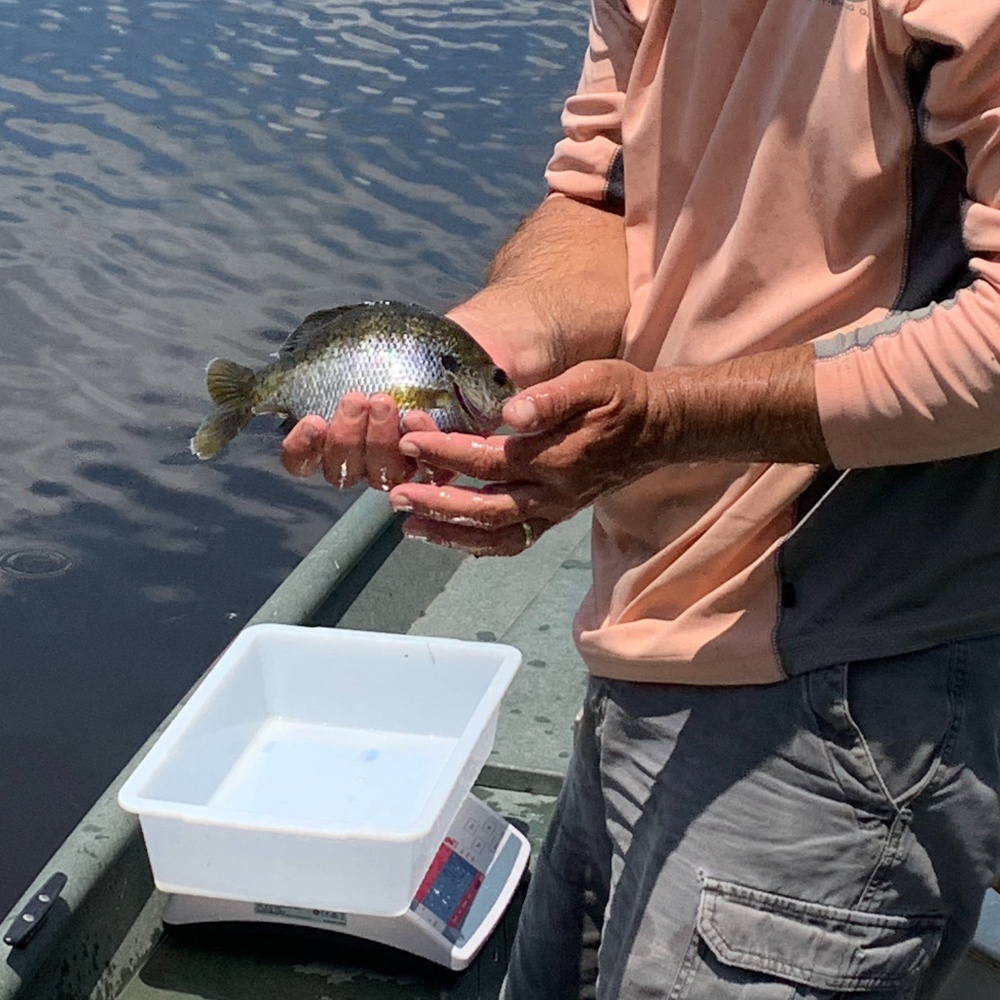Population Sampling

Maximize the Potential of Your Fish!
Is your pond full of small fish that just don’t seem to grow? Our population sampling process will help us determine the reasons why your fish are underachieving.
Slowed or reduced growth in largemouth bass populations can be a result of a wide range of issues including:
1. Lack of prey. The primary food source for largemouth bass are sunfish, particularly bluegill and shellcracker (redear sunfish). If these fish are not abundant, your bass will not have enough to eat.
2. Too much cover for prey. Excessive vegetation makes a bass have to work really hard to find and capture prey. As a result, they spend too much energy on feeding and don’t grow as much.
3. Overcrowding. This follows the same idea as #1. If you have too many bass and not enough sunfish, there’s not enough food to support the top predators.
4. Competition with unwanted species. “Rough” fish like gar and bowfin will feed on the same sunfish, competing with bass for the same food.

The Simplified Pond Food Chain
A pond that produces large fish will have the proper population dynamics at each level of the food chain. If the populations at any of these levels are insufficient, the effects will cascade to the top of the food chain and the growth of top predators will be affected.
The bottom of the pond food chain starts with the microscopic phytoplankton that feed on dissolved nutrients (mainly nitrogen, phosphorous, and potassium) in the water. These phytoplankton are eaten by larger invertebrates, called zooplankton. Zooplankton are then eaten by insects, crustaceans, and small minnows.
Towards the top of the pond food chain, bluegill, shellcracker, and other sunfish feed on those insects, crustaceans, and small minnows. The larger predators like largemouth bass, crappie, catfish, bowfin, and gar will then feed on the sunfish.
Issues most often arise when you have too many predators and not enough prey at any of the levels listed above. We can improve plankton populations through liming and fertilization, and fish populations through stocking or removal. We’ll work to make sure your populations are balanced so that each species of fish can grow to their full potential.

Our Population Sampling Process
If your fish aren’t growing or you’ve noticed an overpopulation of certain species, our team of biologists will sample your pond to determine what can be done to adjust the populations and get your fish growing again.
Our population sampling process uses electrofishing to send electric current into the water. This temporarily stuns the fish and allows us to easily collect them with a net. The fish are then placed in a live well on our sampling boat where they are individually weighed and measured.
Once the data for each fish is collected, we release the fish safely back into the water. We’ll then use the data collected to produce a report that provides a visual representation of the sunfish and bass populations in your pond.
We’ll calculate the relative weights of the fish that were collected, which will provide insights as to what might be causing the fish to be small or skinny. We’ll also provide graphical representations of your fish populations to help you understand the issues at hand.
In some cases, we may recommend that individuals of a certain species be removed to adjust the population numbers. In other cases, we may recommend stocking specific species to provide more available prey for those predators that sit higher on the food chain.
